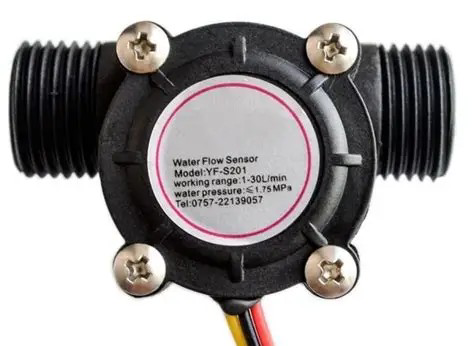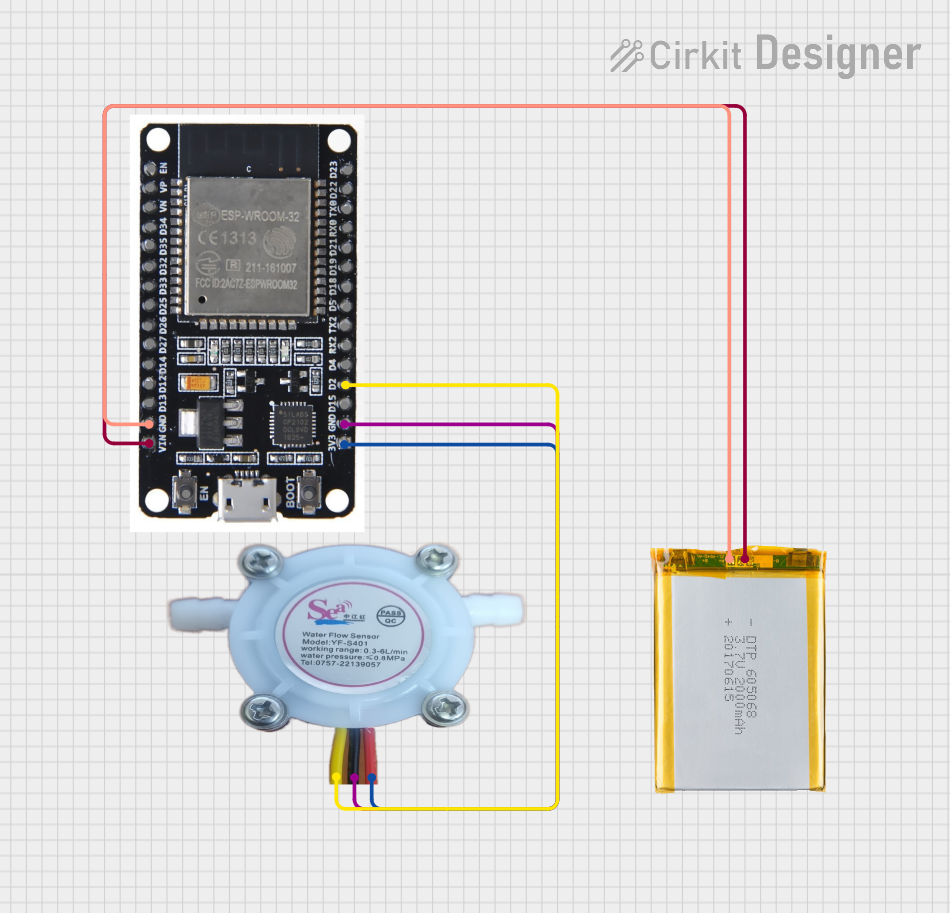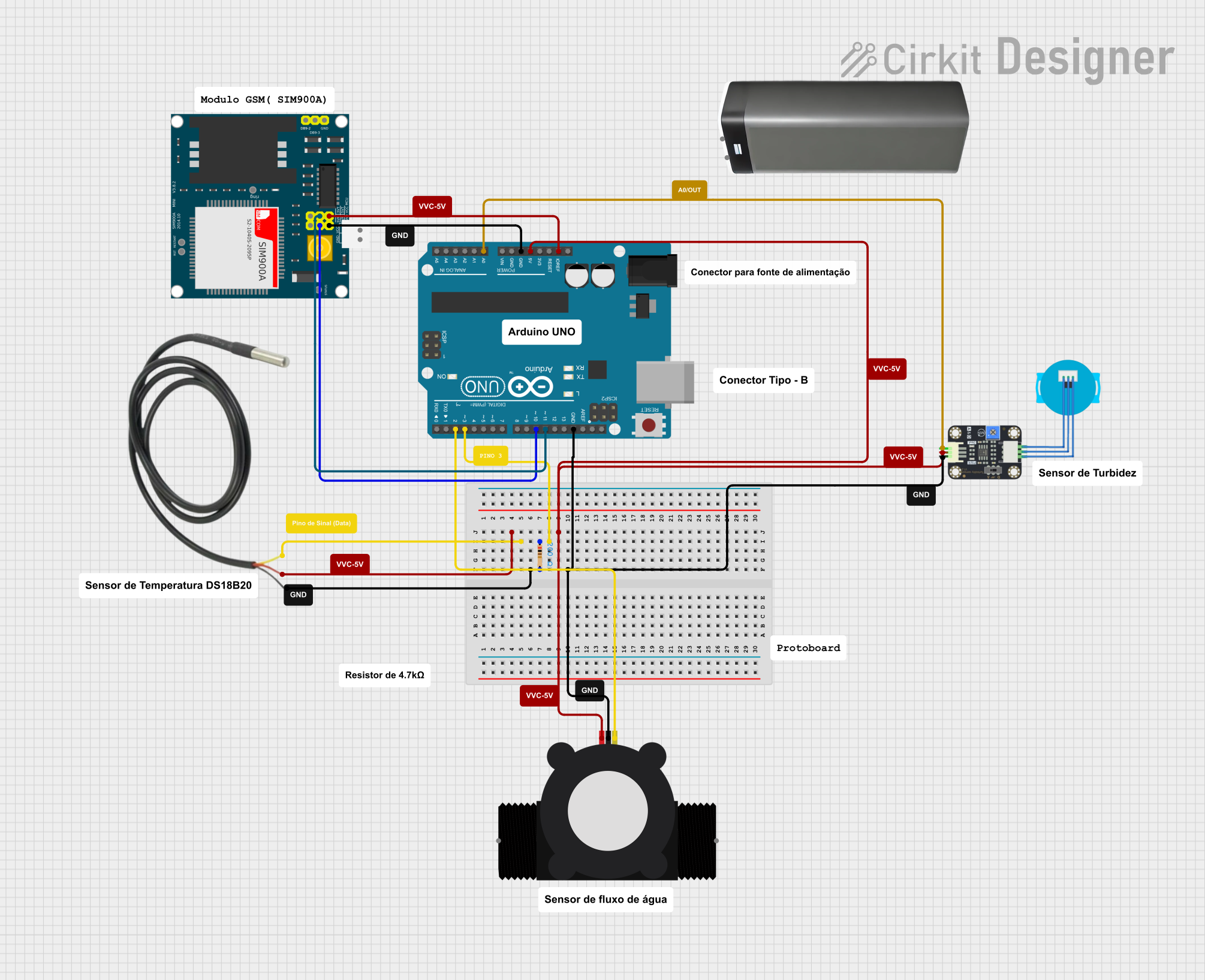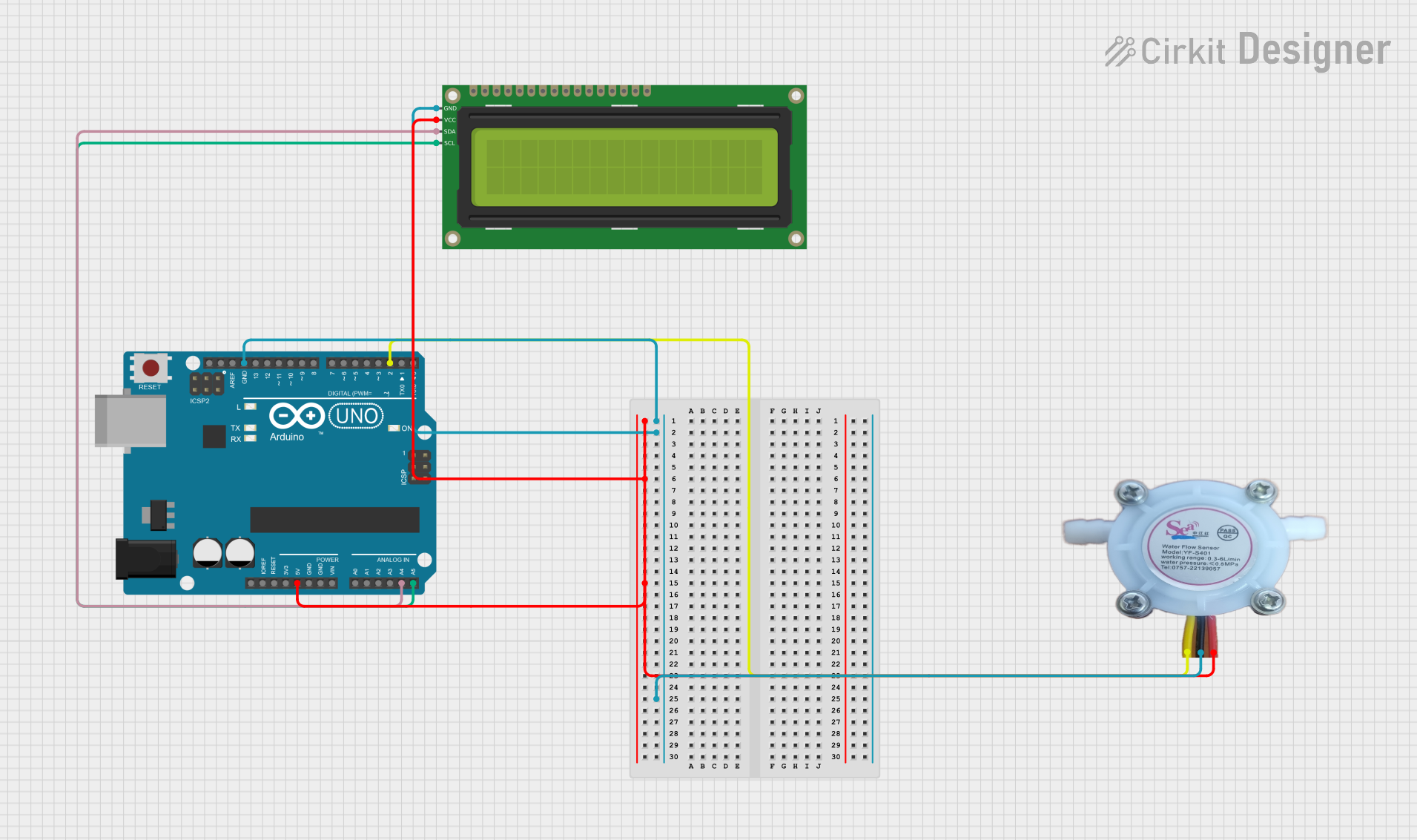
How to Use sensor flow water: Examples, Pinouts, and Specs

 Design with sensor flow water in Cirkit Designer
Design with sensor flow water in Cirkit DesignerIntroduction
The Arduino Sensor Flow Water is a device designed to measure the flow rate of water in a system. It provides accurate and real-time data, making it ideal for monitoring and controlling water usage in various applications. This sensor is commonly used in irrigation systems, water dispensers, industrial fluid monitoring, and smart home water management systems. Its compact design and compatibility with Arduino microcontrollers make it a versatile and user-friendly component for both hobbyists and professionals.
Explore Projects Built with sensor flow water

 Open Project in Cirkit Designer
Open Project in Cirkit Designer
 Open Project in Cirkit Designer
Open Project in Cirkit Designer
 Open Project in Cirkit Designer
Open Project in Cirkit Designer
 Open Project in Cirkit Designer
Open Project in Cirkit DesignerExplore Projects Built with sensor flow water

 Open Project in Cirkit Designer
Open Project in Cirkit Designer
 Open Project in Cirkit Designer
Open Project in Cirkit Designer
 Open Project in Cirkit Designer
Open Project in Cirkit Designer
 Open Project in Cirkit Designer
Open Project in Cirkit DesignerTechnical Specifications
- Manufacturer: Arduino
- Model: Sensor Flow Water
- Measurement Range: 1–30 L/min (liters per minute)
- Operating Voltage: 5V DC
- Output Signal: Pulse frequency (Hz) proportional to flow rate
- Accuracy: ±2%
- Maximum Pressure: 1.75 MPa
- Operating Temperature: -25°C to 80°C
- Connector Type: 3-pin (VCC, GND, Signal)
Pin Configuration and Descriptions
| Pin | Name | Description |
|---|---|---|
| 1 | VCC | Power supply input (5V DC) |
| 2 | GND | Ground connection |
| 3 | Signal | Pulse output signal proportional to flow |
Usage Instructions
How to Use the Sensor in a Circuit
Wiring the Sensor:
- Connect the VCC pin of the sensor to the 5V pin on the Arduino.
- Connect the GND pin of the sensor to the GND pin on the Arduino.
- Connect the Signal pin of the sensor to a digital input pin on the Arduino (e.g., D2).
Circuit Example:
- Use a pull-up resistor (10kΩ) on the signal line to ensure stable readings.
- Ensure the water flow direction matches the arrow on the sensor body.
Arduino Code Example: Below is a sample Arduino sketch to read and calculate the water flow rate:
// Define the pin connected to the sensor's signal output const int flowSensorPin = 2; // Variables to store pulse count and flow rate volatile int pulseCount = 0; float flowRate = 0.0; unsigned long previousMillis = 0; // Pulse frequency to flow rate conversion factor (adjust as per sensor specs) const float calibrationFactor = 4.5; void setup() { // Initialize serial communication for debugging Serial.begin(9600); // Set the flow sensor pin as input pinMode(flowSensorPin, INPUT); // Attach an interrupt to count pulses from the sensor attachInterrupt(digitalPinToInterrupt(flowSensorPin), countPulses, RISING); } void loop() { // Calculate flow rate every second unsigned long currentMillis = millis(); if (currentMillis - previousMillis >= 1000) { previousMillis = currentMillis; // Calculate flow rate in liters per minute flowRate = (pulseCount / calibrationFactor); // Print the flow rate to the serial monitor Serial.print("Flow Rate: "); Serial.print(flowRate); Serial.println(" L/min"); // Reset pulse count for the next interval pulseCount = 0; } } // Interrupt service routine to count pulses void countPulses() { pulseCount++; }
Important Considerations and Best Practices
- Calibration: The calibration factor may vary depending on the specific sensor model. Refer to the datasheet or test the sensor to determine the correct value.
- Water Quality: Ensure the water is free of debris or particles that could clog the sensor.
- Orientation: Install the sensor in the correct orientation as indicated by the arrow on the housing.
- Pressure Limits: Do not exceed the maximum pressure rating of 1.75 MPa to avoid damaging the sensor.
Troubleshooting and FAQs
Common Issues and Solutions
No Output Signal:
- Check the wiring connections, ensuring VCC, GND, and Signal are properly connected.
- Verify that the Arduino is powered and the sensor is receiving 5V.
Inaccurate Flow Rate Readings:
- Ensure the calibration factor in the code matches the sensor's specifications.
- Check for air bubbles or debris in the water line that may affect flow measurement.
Intermittent Signal:
- Use a pull-up resistor (10kΩ) on the signal line to stabilize the output.
- Inspect the sensor for physical damage or wear.
FAQs
Q: Can this sensor measure other liquids besides water?
A: The sensor is designed for water. Using it with other liquids may affect accuracy or damage the sensor. Consult the datasheet for compatibility.
Q: How do I clean the sensor?
A: Disconnect the sensor from the system and rinse it with clean water. Avoid using harsh chemicals or abrasive materials.
Q: Can I use this sensor with a 3.3V microcontroller?
A: The sensor requires a 5V power supply. If using a 3.3V microcontroller, you may need a level shifter for the signal line.
By following this documentation, you can effectively integrate the Arduino Sensor Flow Water into your projects for accurate water flow monitoring and control.